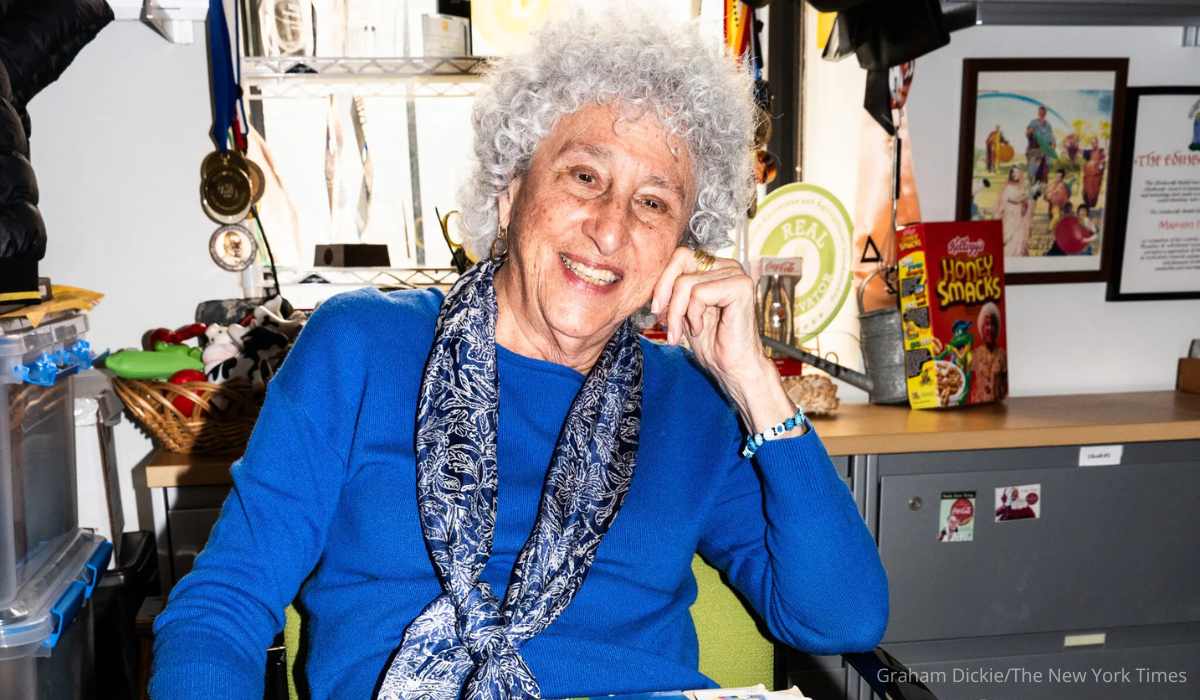This Is the Food Guide You Need Right Now
If you’re like a lot of people, the grocery store can be a minefield of marketing. No sugar! Plant-based! All natural! What does any of it mean, and what should you be tossing into your cart—or avoiding?
Marion Nestle, America’s most trusted food policy expert, is here to help you answer those questions and more.
In her new book, What to Eat Now, Nestle explains how the food industry still shapes what ends up on our plates and shows us how to navigate the supermarket and cut through the noise. Here, Nestle fills us in on what’s changed (and what hasn’t) in the twenty years since her book What to Eat came out, how she reads food labels, and timeless tips we can all use.
A CONVERSATION WITH MARION NESTLE
The original What to Eat came out nearly 20 years ago. What’s changed the most about how we think about food since then? And what hasn’t changed at all?
Well, let me start with, what hasn’t changed at all. The purpose of supermarkets and food companies is to sell more food, not less, and to please their stockholders to sell the most profitable foods to the most people in the largest amounts and at the highest prices they can get away with. That’s the game that we’re involved in. But within that game, there have been some amazing changes.
I started out thinking this book would be a quick pandemic project that I could knock off in about six months. Here we are, four years later! This was a four-year project, and it had to do with changes that I didn’t even recognize were taking place. Some of them are profound.
- Online ordering has totally changed the way supermarkets operate. People don’t like to order produce online because they can’t see it and they don’t really understand what they’re getting. So that’s something that’s a concern.
- On the good side, bottled waters have replaced sugar sweetened beverages in lots of places. That seems like a step forward.
- We’ve also seen the introduction of plant-based milks. Twenty years ago, there was soy milk. Now, there’s a milk made out of any plant you can think of. There are also plant-based meats, plant-based cheese. I think most products are good. Some of them are not so good.
- One of the things that really surprised me is the introduction of “no labels”—long lists of what products don’t have in them. (No sugar, no salt, no high fructose corn syrup, no GMOs, no gluten, the list goes on and on.) It makes me wonder what’s actually in these things.
- The advent of “wellness” products is also new. Supermarkets are full of them. Now, how healthy they are is something we can argue about. I’m a big believer in reading labels.
How do you read food labels?
I start with the ingredient list. This sometimes requires a magnifying glass, because, boy, do they hide certain ingredients! And there are so many labels that are dark type on dark backgrounds or light type on light backgrounds and in a tiny font. But that’s where I start, because I want to know what’s in the product.
The way the ingredient list works is they’re listed in order of predominance by weight, so the ingredient that’s there in the largest amount is listed first, second, third, and on down the list. This works for most ingredients except sugar. The U.S. Food and Drug Administration (FDA) allows companies to divide sugar into different types. So, you could have sugars listed five or ten times on an ingredient list, in increasingly in smaller and smaller amounts—whereas if you grouped all the sugars together, they would be the first ingredient on the list. You have to look at the nutrition facts panel to see how many grams of sugar are there.
I like to start with the ingredients. I want to know what’s in a food. I care much more about that than what’s not there.
If you could give one piece of advice to someone grocery shopping today who wants to eat to optimize their health, what would it be?
Follow basic dietary advice, which is so simple that Michael Pollan can do it in seven words: eat food, not too much, mostly plants.
Also, make sure you buy some fruits and vegetables every time you go to a supermarket.
What’s one change that could make the biggest difference for public health in the next decade when it comes to what we eat?
Increasing the proportion of plant foods we eat. I used to say, “Don’t drink your calories.” And it’s still wise to avoid sugar sweetened beverages to the extent that you can, because drinking lots of sugar at one time is not very good for your metabolism. But most people have done that and have already switched to bottled waters of one kind or another.
I think healthy diets are easy. You’ve got lots of choices. Just don’t eat too much and make sure the foods you eat aren’t too processed.
How do you rise above the noise when it comes to nutrition?
I’ve been at this game for a long time. People ask me, “Who do you trust in nutrition?” And I say, “Me, of course!” I read a lot. I work on this all the time. I have a daily blog at foodpolitics.com where I write about these issues all the time. I think it’s nice if you can find somebody you trust and then listen to what they say. But if something doesn’t make sense, use common sense. If somebody is telling you that everything you know about nutrition is wrong, that’s probably not right, because a lot of what you know about nutrition is right.
Is there anything that gives you hope about the future of how we’ll eat, shop, and think about food?
Young people are so sophisticated about how food systems work, how food politics works, and what’s really important when it comes to food. I think we’re going to see a wave of improvement in the future, and I’m very excited about that.
Please note that we may receive affiliate commissions from the sales of linked products.




